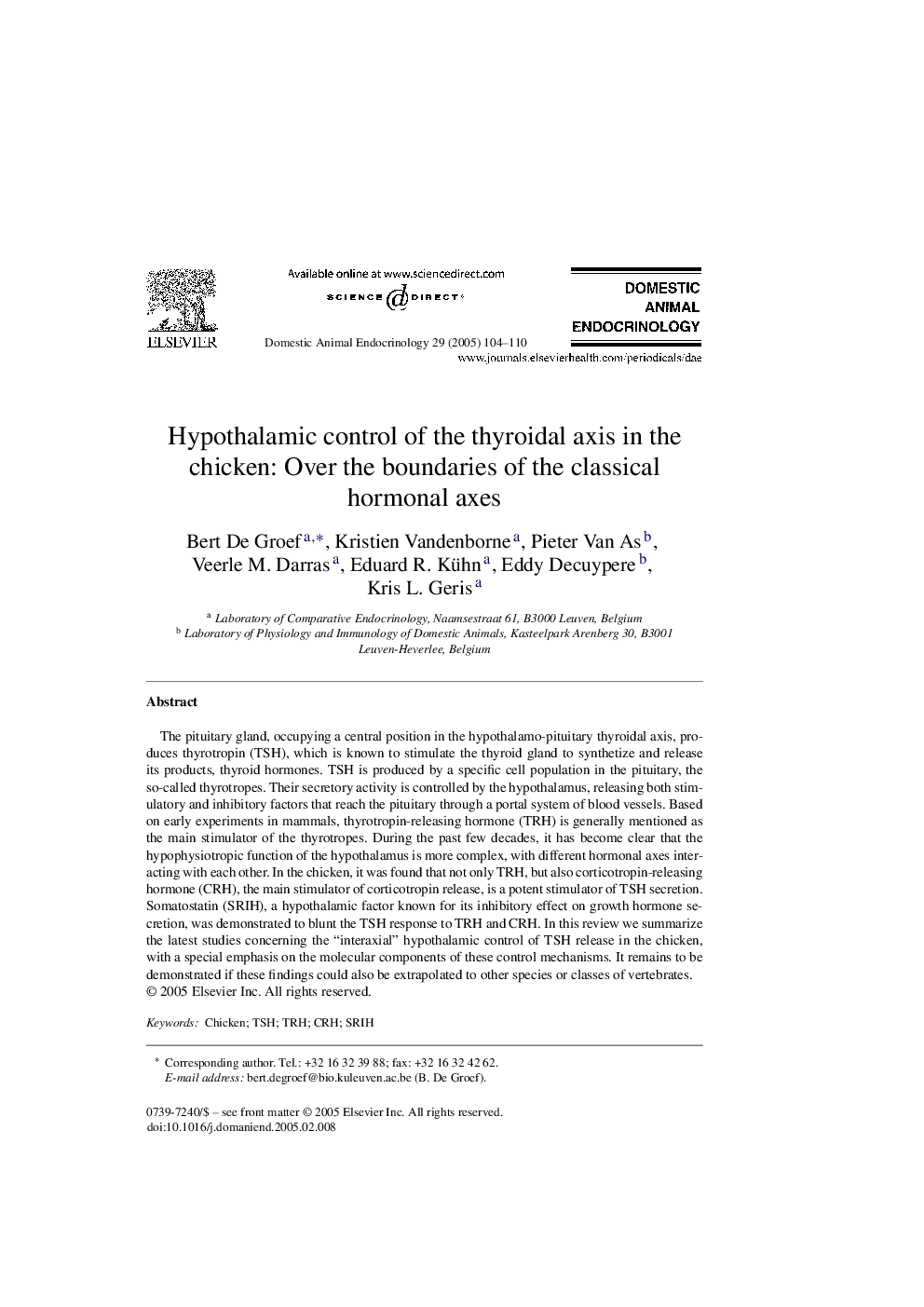| Article ID | Journal | Published Year | Pages | File Type |
|---|---|---|---|---|
| 8967296 | Domestic Animal Endocrinology | 2005 | 7 Pages |
Abstract
The pituitary gland, occupying a central position in the hypothalamo-pituitary thyroidal axis, produces thyrotropin (TSH), which is known to stimulate the thyroid gland to synthetize and release its products, thyroid hormones. TSH is produced by a specific cell population in the pituitary, the so-called thyrotropes. Their secretory activity is controlled by the hypothalamus, releasing both stimulatory and inhibitory factors that reach the pituitary through a portal system of blood vessels. Based on early experiments in mammals, thyrotropin-releasing hormone (TRH) is generally mentioned as the main stimulator of the thyrotropes. During the past few decades, it has become clear that the hypophysiotropic function of the hypothalamus is more complex, with different hormonal axes interacting with each other. In the chicken, it was found that not only TRH, but also corticotropin-releasing hormone (CRH), the main stimulator of corticotropin release, is a potent stimulator of TSH secretion. Somatostatin (SRIH), a hypothalamic factor known for its inhibitory effect on growth hormone secretion, was demonstrated to blunt the TSH response to TRH and CRH. In this review we summarize the latest studies concerning the “interaxial” hypothalamic control of TSH release in the chicken, with a special emphasis on the molecular components of these control mechanisms. It remains to be demonstrated if these findings could also be extrapolated to other species or classes of vertebrates.
Related Topics
Life Sciences
Agricultural and Biological Sciences
Animal Science and Zoology
Authors
Bert De Groef, Kristien Vandenborne, Pieter Van As, Veerle M. Darras, Eduard R. Kühn, Eddy Decuypere, Kris L. Geris,
